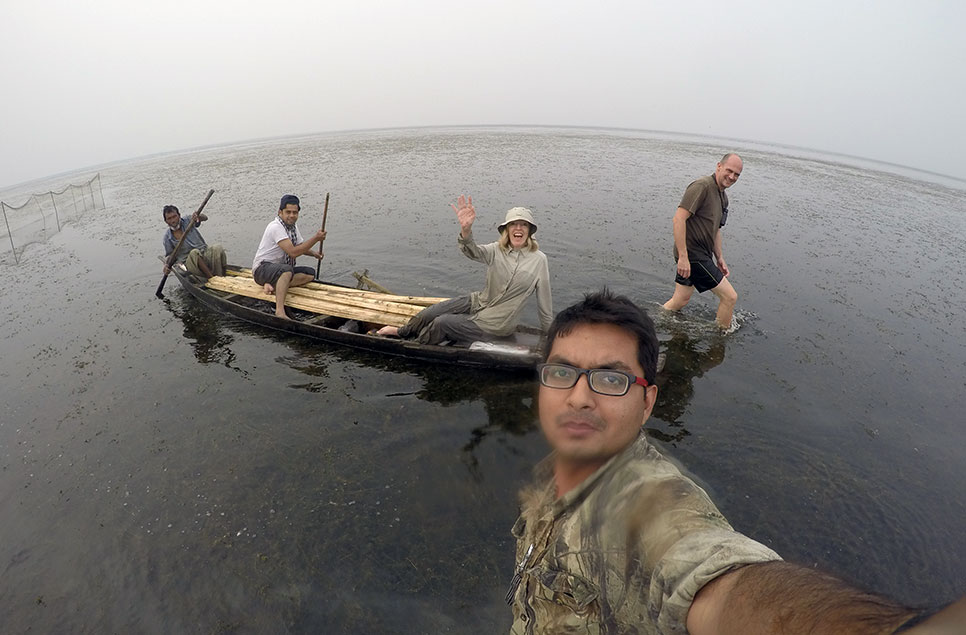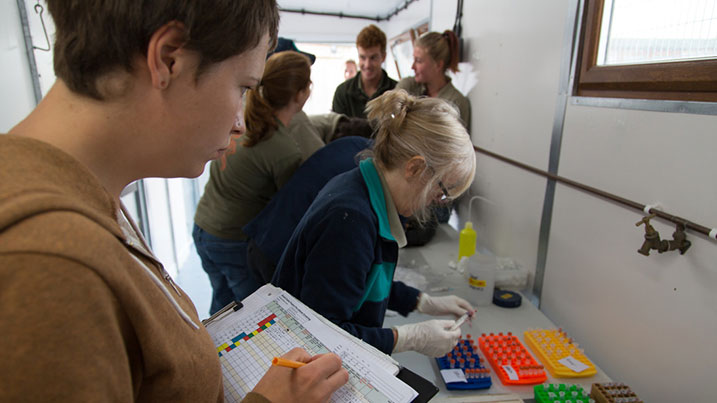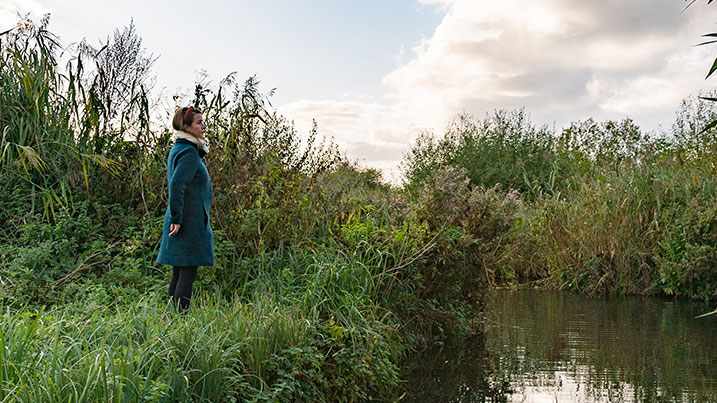'I want to make wetlands healthier for people and wildlife' - My Wild Life with Dr Ruth Cromie
Dr Ruth Cromie shares with Waterlife how she finds hope, good health and inspiration in nature and young people, and how WWT is creating ‘nearby nature’ by putting wetlands into the landscape.

Dr Ruth Cromie shares how she finds hope, good health and inspiration in nature and young people.
If I could wave a magic wand, I would wish that everyone could comprehend the amazingness, beauty and fundamental interconnectedness and importance of wetlands for all life. This would change how we look after the planet.
I can’t get through my day without my team. They’re all super-bright, passionate, dedicated souls who endlessly inspire me with their knowledge and creative thinking. My job involves tackling the largely unpleasant problems of disease and pollution. But finding diverse solutions and persuading or empowering people to change their behaviour or practices is satisfying.

T-leet leet leet’. I love the green sandpipers that scoot about like weird water-loving house martins. They turn up on the lake outside my office, and when I hear their calls I know autumn migration has begun. They’ll be t-leeting for a few days then off again towards Africa. They always leave me amazed but grateful for their fleeting visit.
It makes me happy to see water birds do their thing. Whether it’s jinking flocks of teal or geese argy-barging in fields, birds exercise all those emotions that make my heart swell. And sunrises! We should all watch the dawn break more often.
We know nature is good for us in many ways, from hastening recovery times to improving self-esteem. Wetlands provide a setting not just for physical exercise, but for relaxation and restoration. Our work indicates that spending time by water can help reduce anxiety and stress. The feedback from participants of the ‘Blue Prescription’ pilot project was really quite affecting and moving. This body of work is about supporting healthier people, but also delivering more healthy wetlands – it’s a win-win for everyone.

Weirdly, the global impact of bird flu gave us a chance to put health firmly on the agenda of the multilateral environmental agreements. That has led us to getting through a number of key global resolutions to protect wildlife from diseases, damaging activities or pollutants such as lead ammunition.
At huge international meetings, seeing the majority of the world’s countries sign up to an idea you’ve proposed is fairly gobsmacking.
I want to make wetlands healthier for people and wildlife. And right now, I want to see lead ammunition consigned to history. Lead poisoning has been a huge part of my job – and my life?!– for way too long. For wildlife and eaters of game meat, the future needs to be non-toxic.
Training people such as postgrad students in skills they need to make the world a healthier place is immensely rewarding. Their ideas, perspectives and energy always keep me on my toes and give me hope.
WWT provides everyone with places to be. Our centres allow visitors to be social in a natural setting, and provide spaces for calm and contemplation. But it’s more than that. WWT is creating ‘nearby nature’ by putting wetlands into the landscape. This is particularly important in urban areas if people are to have the benefits of wetland nature close at hand.
You can help yourself to better health by making time for yourself in nature. Modern life is overfull and stressful, so making time outdoors, preferably by water, is a great way to regroup and re-centre.
Find out more about wetlands and wellbeing
This article was originally published in Waterlife.



